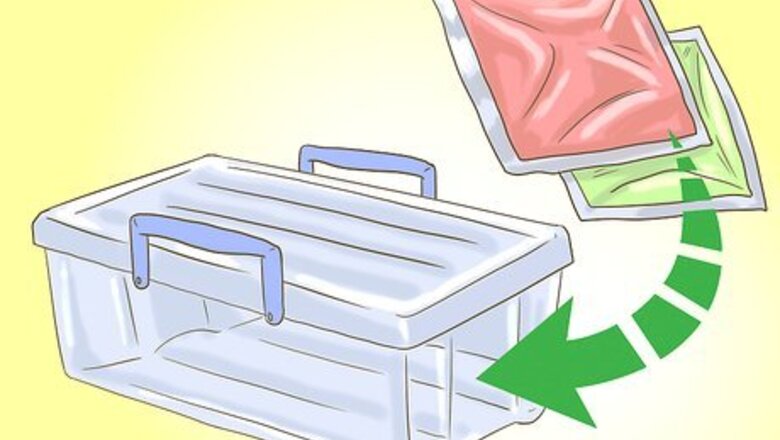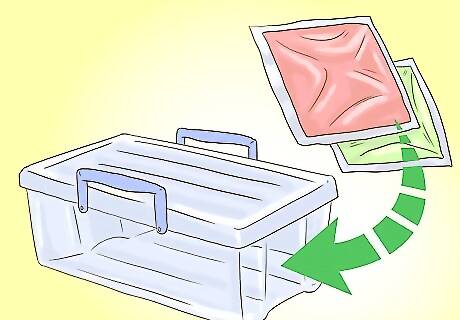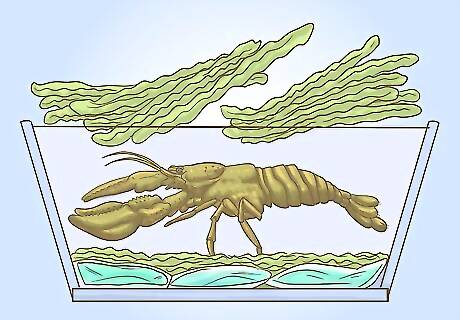
views
Packaging the Lobster

Line the bottom of a plastic spill-proof container with frozen liquid gel packs. This will help keep the lobster fresh. If you do not have gel packs, a Ziploc baggie filled with ice will suffice.

Cover the gel packs with seaweed. If you don't have seaweed, wet newspapers will work as a substitute. Be sure to use a few layers to protect the gel packs from the lobster.

Place the lobster on top of the seaweed. Be sure the lobsters' claws are secured, either with rubber bands or zip ties. Give the lobsters enough room so they will not be crushed by the lid.

Add one last layer of seaweed on top of the lobster. Tuck the seaweed into the sides of the box to secure your lobster and pack the lid on tight.
Flying with Lobster

Package your lobster in a clear plastic container if you plan to check in your lobster. TSA regulations allow live lobsters to be checked in and will visually inspect your lobster. To make the process go more smoothly, make sure the container is spill-proof.

Contact your airline if you plan to bring your lobster as a carry-on. Not all airlines allow seafood to be brought in as a carry-on, so it helps to check in with them before getting to the airport and see what policies they have in place. Some airlines require your package to be wrapped in plastic and protected by styrofoam inserts. Also, check that your package fits the required dimensions specific to your airline.

Prepare for additional scrutiny when flying in the U.S. Expect to have your lobster inspected. Again, contact your airline to determine the proper procedure for carrying on lobster.




















Comments
0 comment